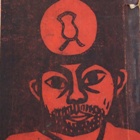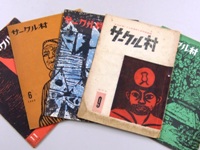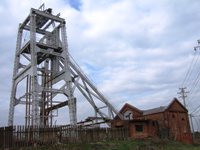Profile
- Research Subject
Postwar cultural movement centered on Circle Village. Japanese feminist thought. Examination from an ideological perspective of postwar literature centered on Yoshie Hotta.
- Research Fields
- Gender, History of Thought
- Faculty - Division / Research Group / Laboratory
- Division of Humanities / Research Group of Cultural Representations / Laboratory of Visual and Modern Culture
- Graduate School - Division / Department / Laboratory
- Division of Humanities / Department of Cultural Representations / Laboratory of Visual and Modern Culture
- School - Course / Laboratory
- Division of Humanities and Human Sciences / Course of Linguistics and Literature / Laboratory of Visual and Modern Culture
- Related Links
Lab.letters


Group activities that convey the dynamism of those who lived in coal mines
In the 1950s, domestic coal mines served as focal points for cultural activities related to literature, choral groups, plays and so on. Community magazines focusing on regional topics were also published. These magazines covered a broad range of topics, including those specific to coal mines. The intention was to inform the world of the oppressive working conditions. Printed pages successfully conveyed to readers the dynamism of those who lived at coal mines.
In 1958, the Circle Village monthly magazine, aimed at networking group activities based in local communities, was first published in Nakama City, Fukuoka Prefecture. The editorial board included Gan Tanigawa, Kazue Morisaki, Eishin Ueno and other intellectuals. It was my study of Kazue Morisaki that led to the beginning of my research on group activities. Going further from a starting point into an unexpected route may be a lure of literary research.
Fresh testimony, natural bounteousness and
wider perspectives obtained in Hokkaido
It was in 2002 that I came up from Tokyo to take a position at Hokkaido University. Visiting Yubari, Bibai and Utashinai, which were once major coal mining areas, I was able to hear helpful stories from those who knew of those days. What was nurtured in my mind through these opportunities was a new perspective: that of outlying regions. The history of people who led vibrant lives and were emotionally attached to outlying hometowns that were beyond the view of more centralized areas captured my heart, coupled with Hokkaido’s great natural splendor. By coming to Hokkaido, I was able to expand my perspective, and this was the greatest boon in my life. From now on, by focusing on postwar writers such as Taijun Takeda and Yoshie Hotta, I relish further detours.
Message
In recent years I have been carrying out research on Yoshie Hotta, Taijun Takeda and other postwar authors. My classes deal with various genres such as critical essays, novels and movies under the themes of gender, war and post-colonial matters.
Japanese culture in modern times, having been exposed to the rapid changes of the age in a world of globalization, was shaped under the significant influence of other cultures. What is especially important when learning about Japanese culture in modern times is to have a broad view. To this end, it is imperative to read as many classic works and research papers in various disciplines as possible. It is also important to watch movies and to read newspapers. The reading habits formed during your time as a student will inevitably prove instrumental when living in an uncertain modern society even after graduation from university.




